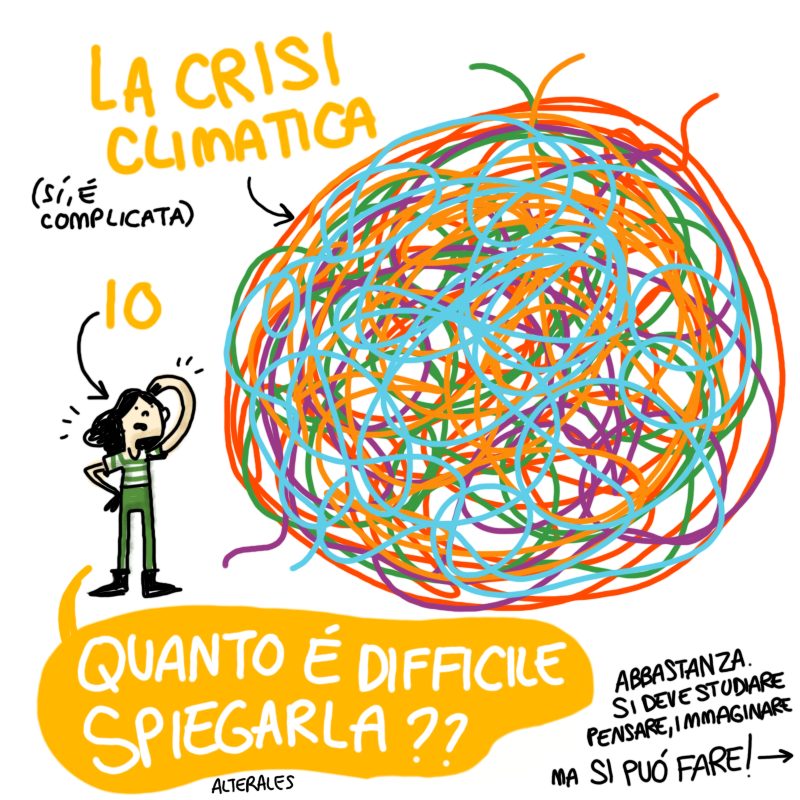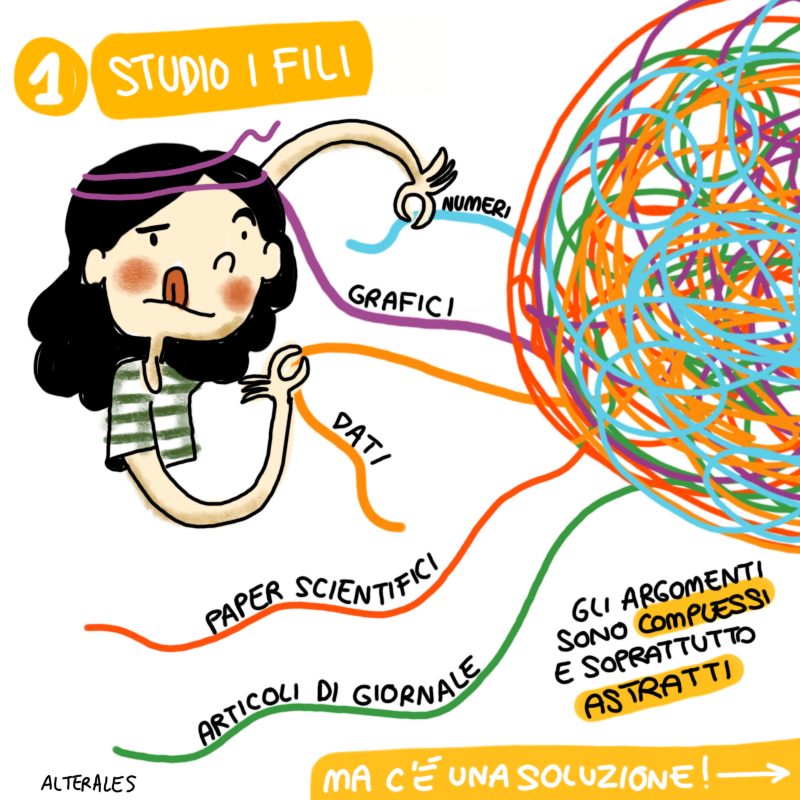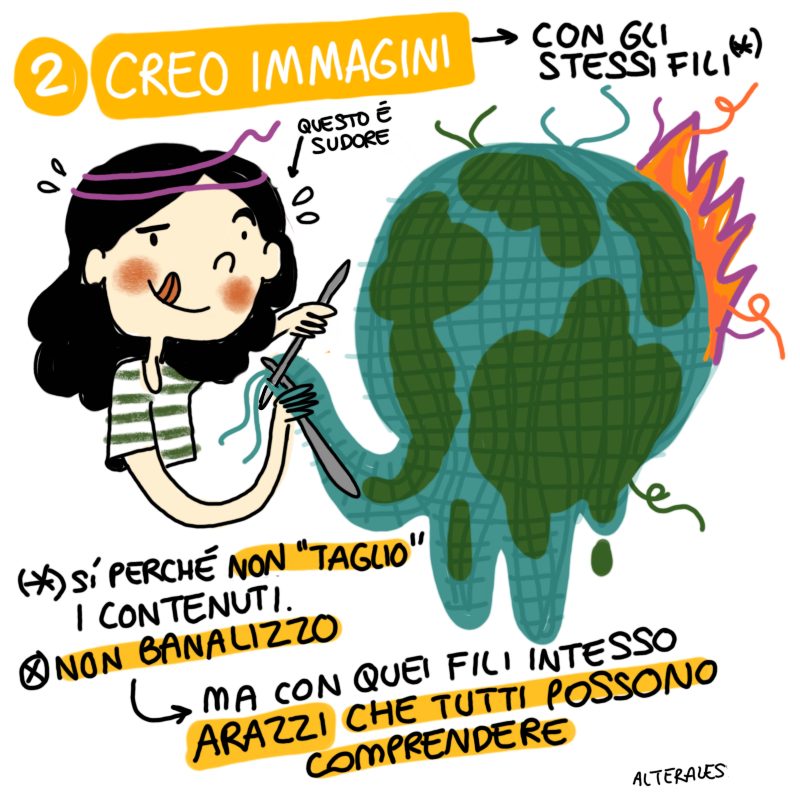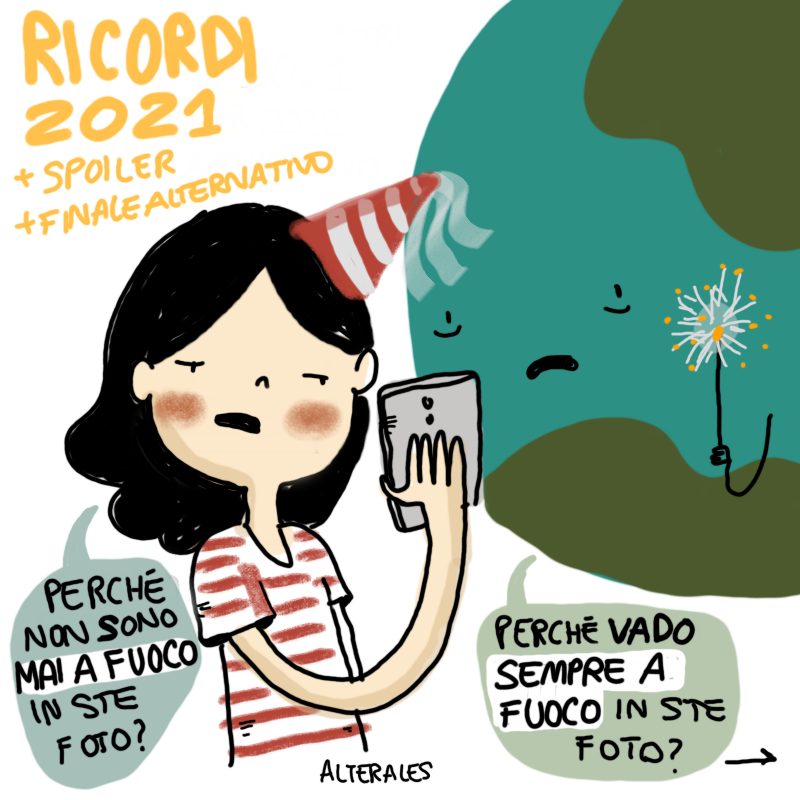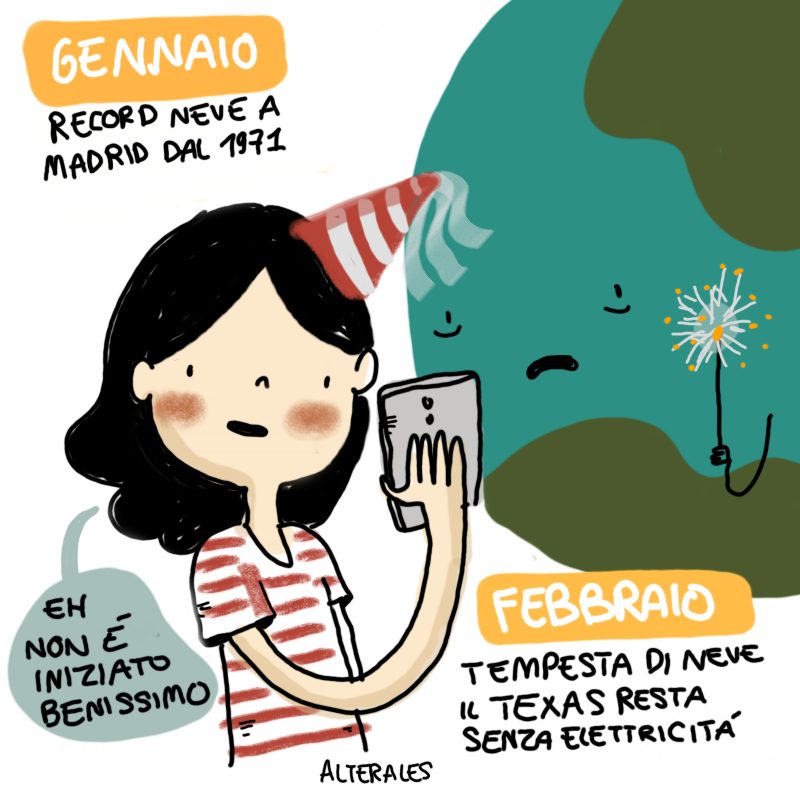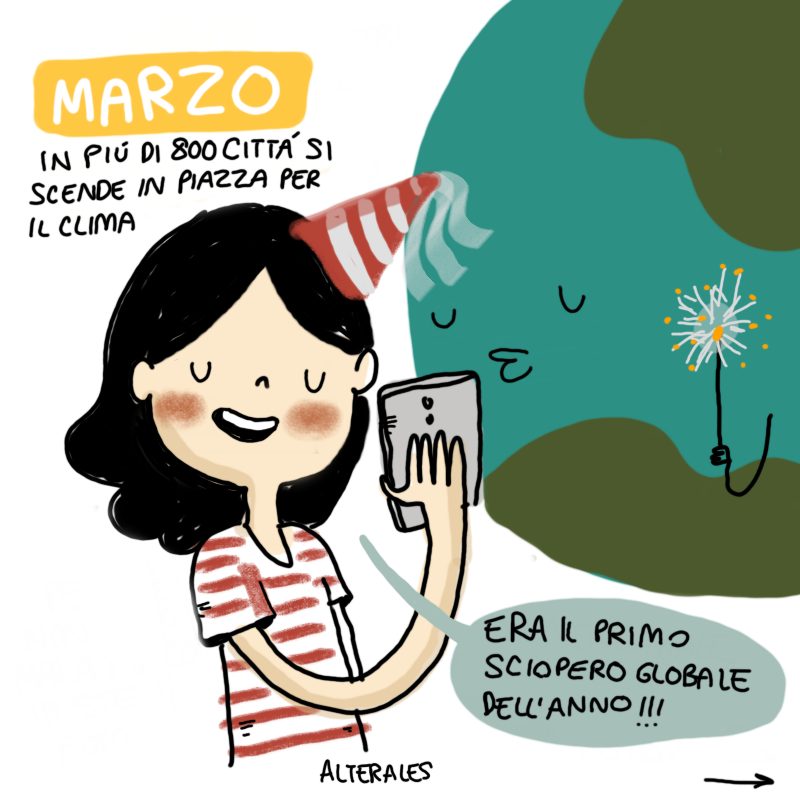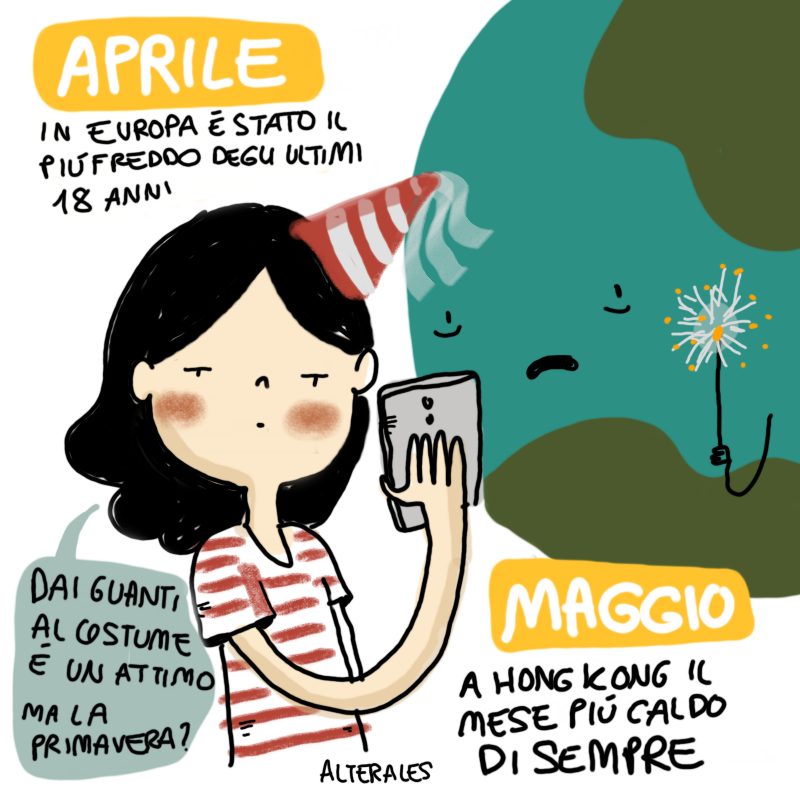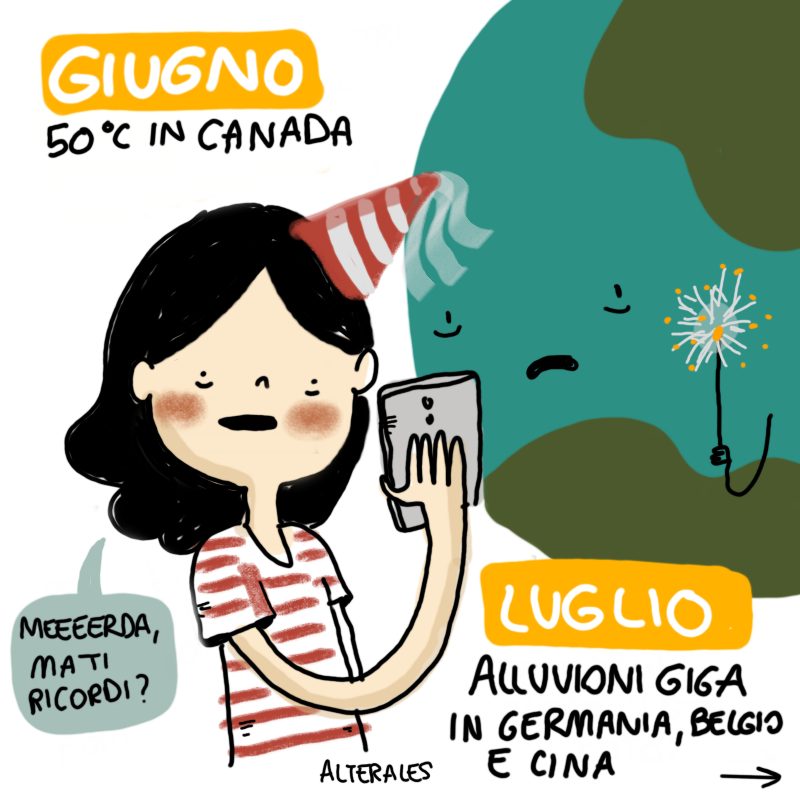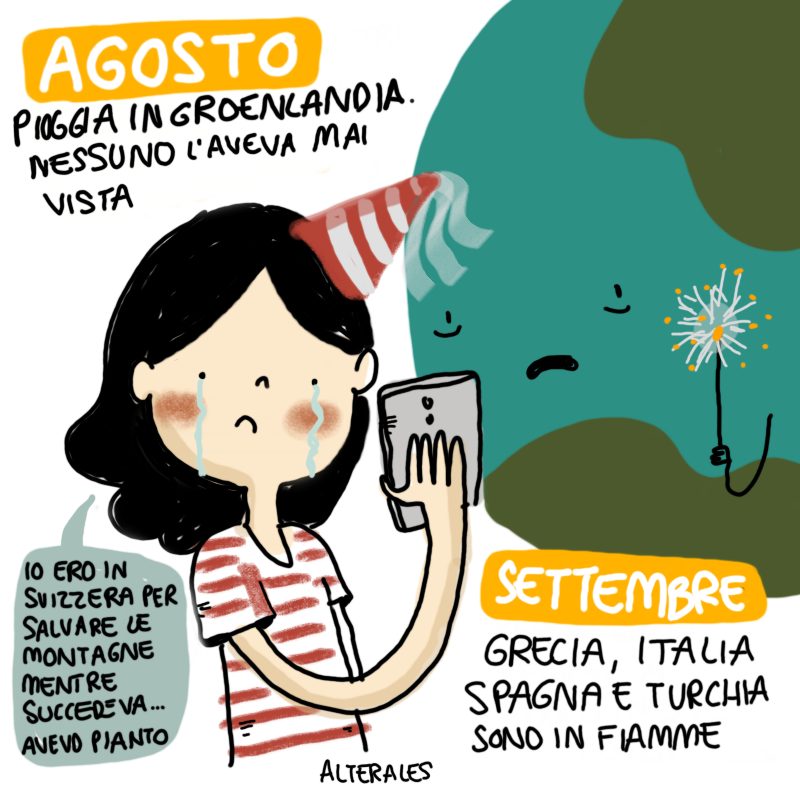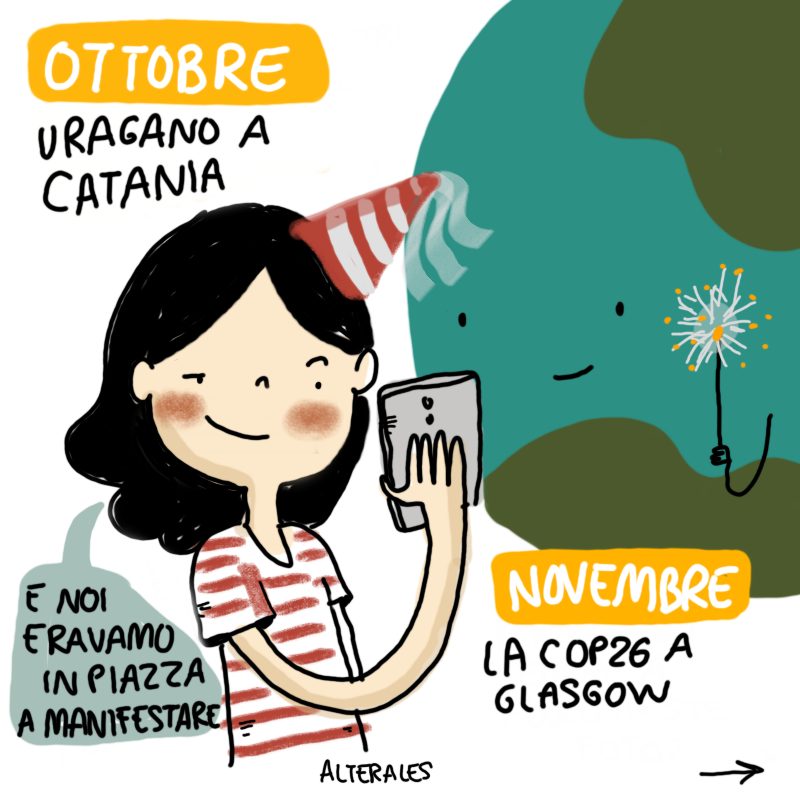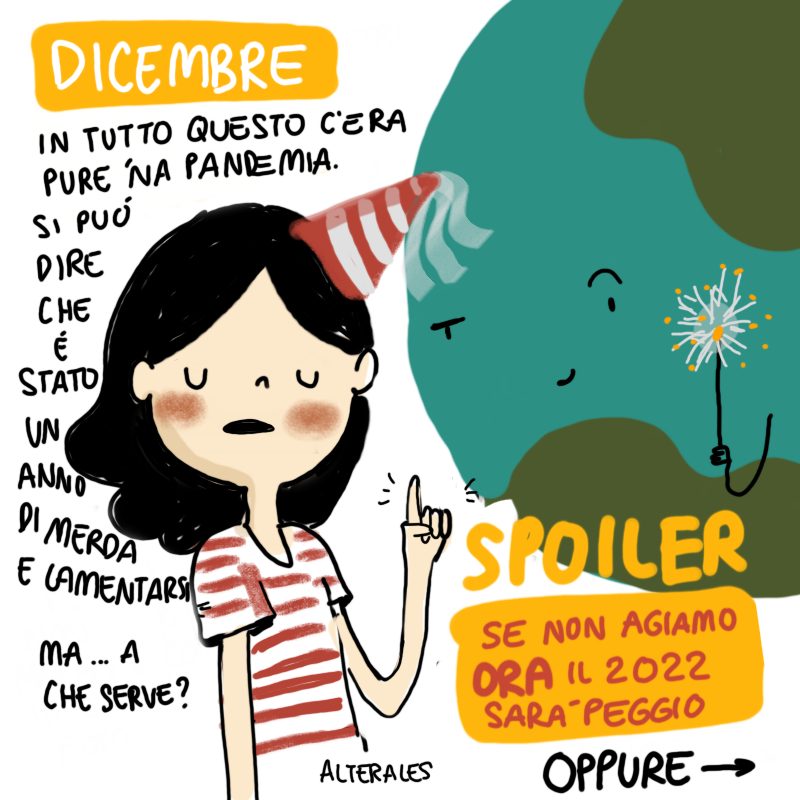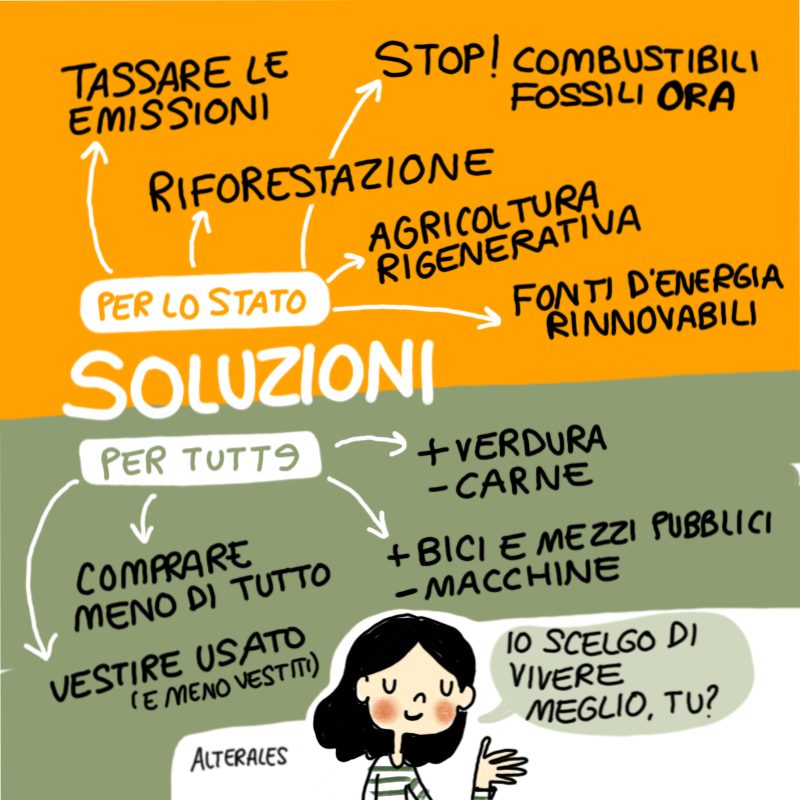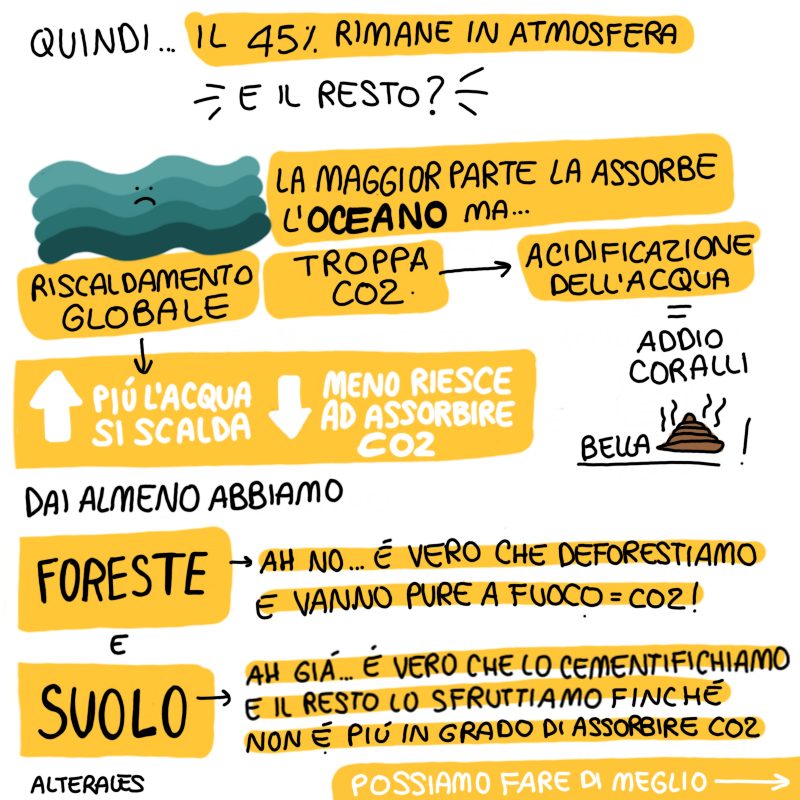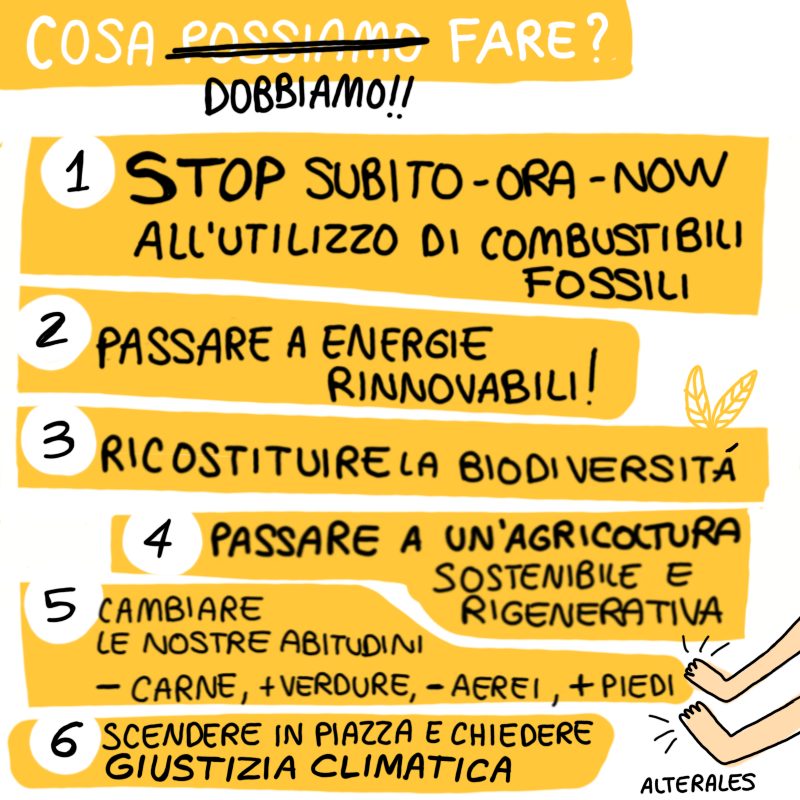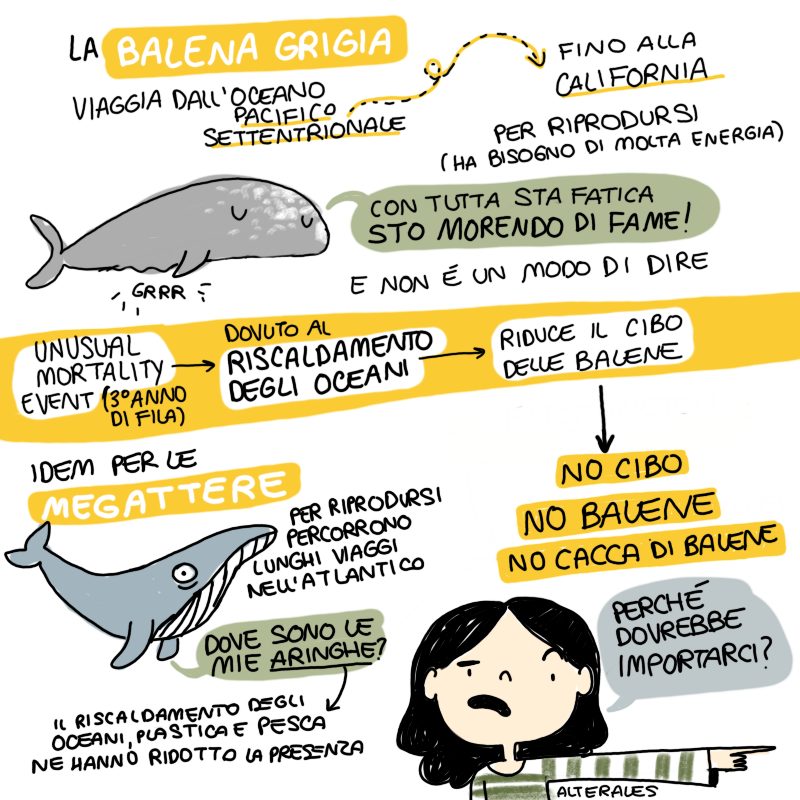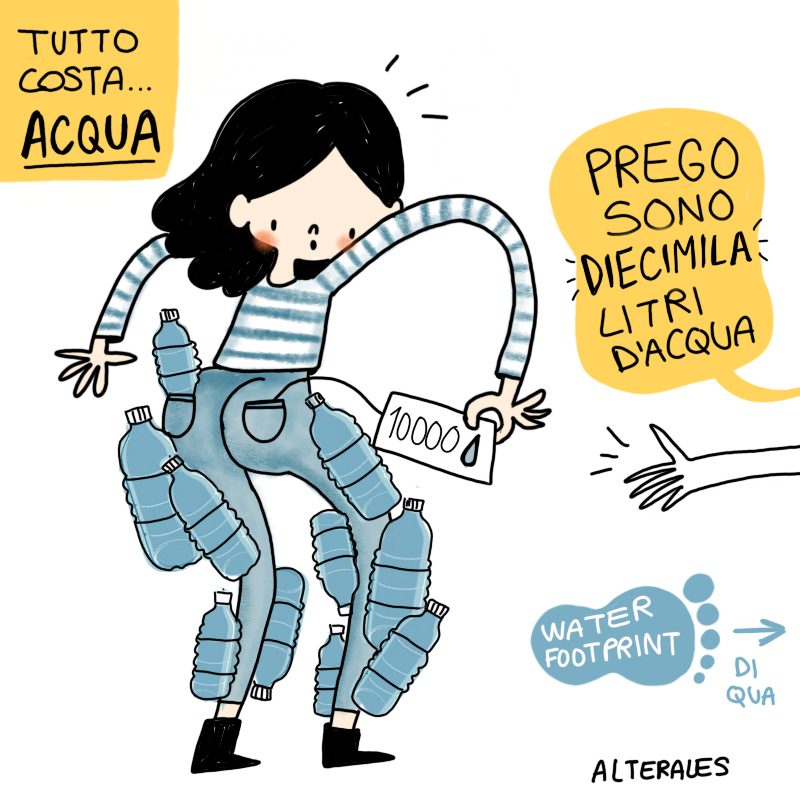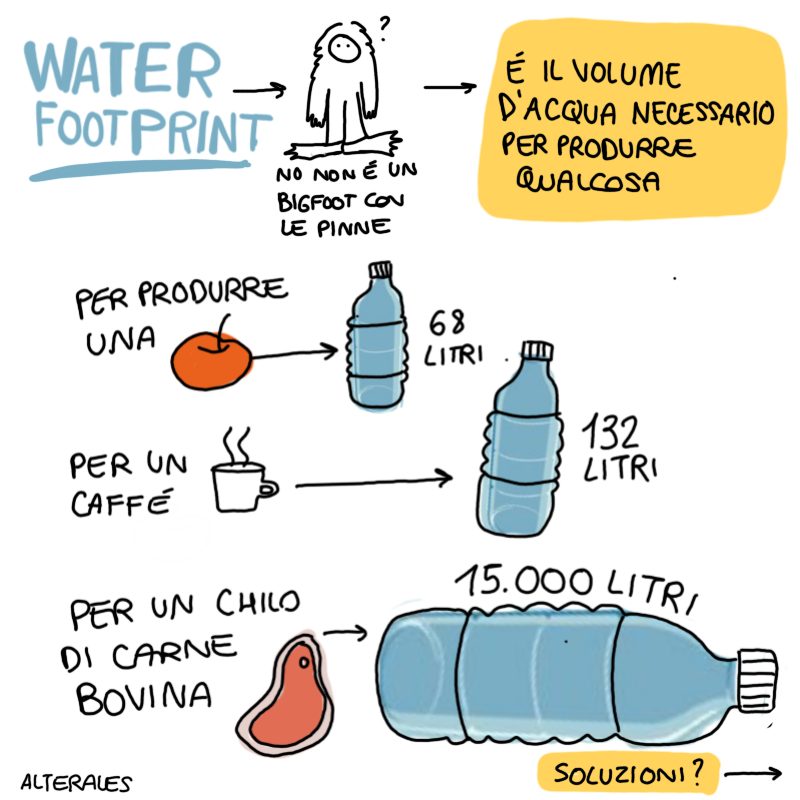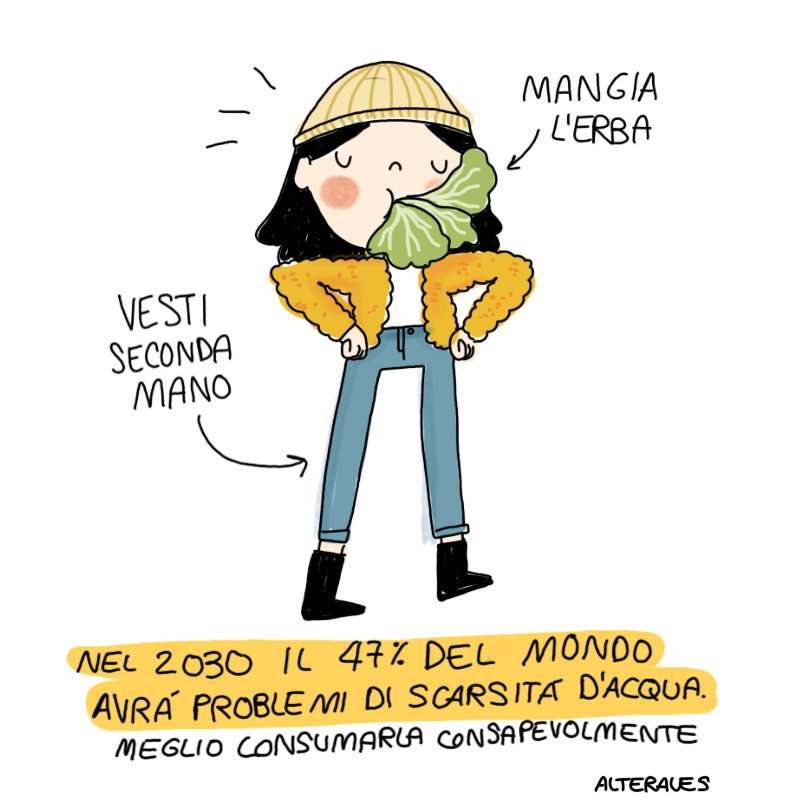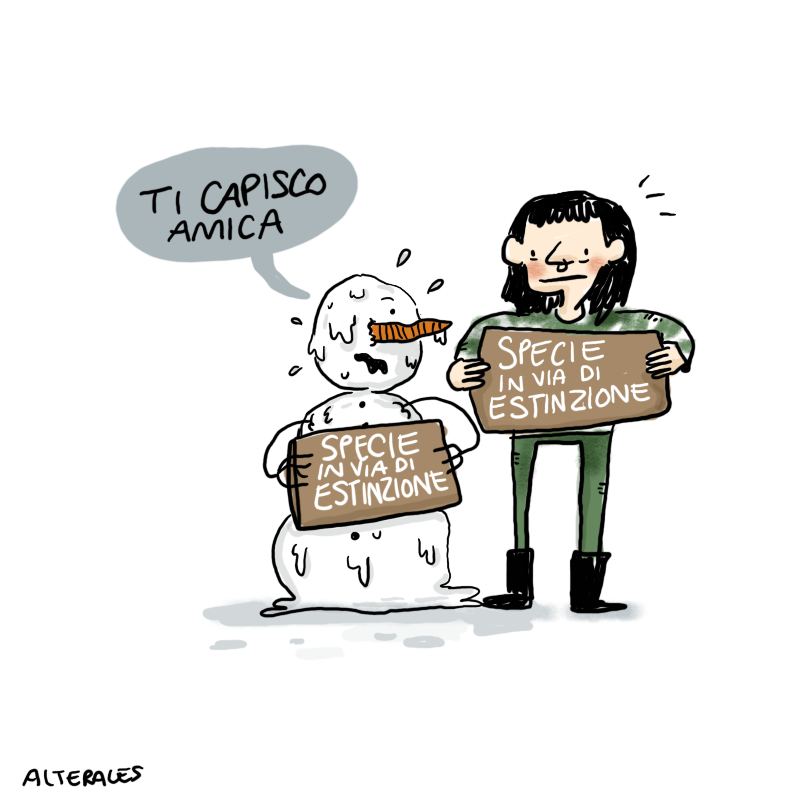Alterales: sketches representing climate change
I’ve always hated being labeled but when I’m told I’m an activist I smile. Active is the opposite of passive, it’s those who are not satisfied with “this is how it works”, activist is those who see that there is a better way. But who can make things better? Anyone. I am convinced that you do not have to be a scientist to defend the planet and our rights, everyone must use their skills to do their part: I draw. I draw because I am convinced of the transformative power of art to change our view of the world. I was lucky enough to grow up in the middle of the countryside, getting my hands dirty with dirt and scraping my knees as I fell out of trees. There are some things you can’t explain about the relationship with nature, you can only live and experience. When scientists talk about our planet they do it using sterile numbers and words, but what leaves a mark on people? It is difficult for someone to think back during the day to a graph full of lines and data, but everyone remembers the excitement of a sunset, the fear of a storm, the serenity of the silence of the mountains.
Only when you love something are you willing to take care of it.
We need emotions. We need images to visualize the problem of the climate crisis. Through metaphors and irony even science can connect to our daily experience: so violent weather phenomena become popcorn popping in a pot. What I do is share awareness, ask questions, activate comparisons, listen to others and learn. I take a political stance as a citizen of the world not to convince others of anything but out of responsibility to that incredible privilege we all have to be the change humanity needs. I tell the story of the climate crisis through Instagram, taking to the streets with fridaysforfuture, talking about it with friends and strangers alike. The most exciting thing about this work is seeing how concrete the possibility of creating a chain reaction of change is in the people around us and, thanks to social media, even in people who live far away from us.
Tips for communicators:
1° make people fall in love with the planet
2° inform people
3° act and be an example
Drawing the climate crisis
Highlights of 2021
The wrong globe
Fossil fuels
This is how fossil fuels are created:
- men find carbon stored by slow cycle = fossil fuels
⇩
- burning them puts co2 back into the atmosphere in the fast cycle
⇩
- plants, oceans and soil try to reabsorb it but…it’s too much in such a short time!
The excess co2 is added to the greenhouse gases et voila… We get global warming!
So, 45% of the co2 stays in the atmosphere…what about the rest?
The ocean absorbs most of it, but too much Co2 storage leads to acidification of the water ⇨ bye bye corals!
Moreover, the more the water warms up, the less it can absorb co2
Come on, but at least we have
- Ah no, unfortunately that we deforest them and they go on fire (increasing the co2 in circulation);
- Sadly, we cement it and the rest we exploit until it is no longer able to absorb co2
We can do better, but what could must we do?
- stop using fossil fuels now – altogether – immediately
- switch to renewable energy
- replenish biodiversity
- move to sustainable and regenerative agriculture
- change our habits: – meat, + vegetables, – planes, + feet
- take to the streets and demand climate justice
Whales
The gray whale swims from the northern Pacific Ocean to California to reproduce, which requires a lot of energy. Likewise for humpback whales, which in order to reproduce make long journeys in the Atlantic that require a great expenditure of energy and need to feed themselves.
Ocean warming, the presence of plastics and fishing have decreased the whales’ food supply, leading to an unusual mortality event for the third year in a row.
⇩
No whale food ⇨ no whales ⇨ no whale poop
Why should we care?
Whales are our allies in fighting the climate crisis.
Whale poop, in fact, is a fertilizer for phytoplacton.
Phytoplactons, in turn, absorb CO2 through photosynthesis and when it dies, sinking to the bottom of the deep, it takes it with it. Basically, it stores CO2 for free!
However, other pitfalls threaten the whales’ lives:
- whaling
- pollution
- giant ships
- intensive fishing
We are part of nature. we are all connected. If you don’t want to do it for the whales, protect them for ourselves.
Blue jeans
Everything costs water.
For example, the jeans you wear cost ten thousand liters of water.
What is water footprint?
No, it is not a bigfoot with fins.
It is the volume of water needed to produce something.
- To produce an apple, it takes 68 liters of water
- To produce a coffee, it takes 132 liters of water
- To produce one kilo of beef, it takes 15.000 liters of water.
What can we do about it?
Eat vegetables and wear second-hand clothes
By 2030, 47% of the world’s population will experience water scarcity.
Better to use it consciously.
Snowman
Both the snowman and the girl hold up a sign that says “endangered species”.

